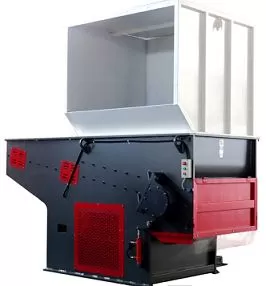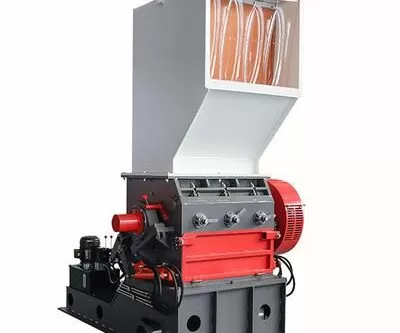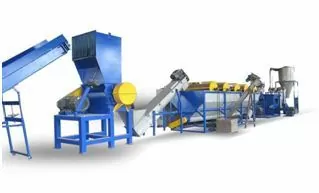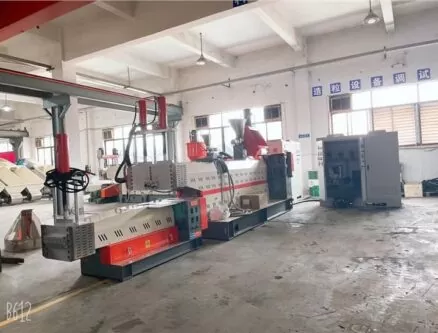Plastic is everywhere. From the toothbrush in your bathroom to the bumper of your car. But have you ever wondered how plastic actually comes to life? If you imagine a chaotic mess of pipes, fumes, and conveyor belts moving at warp speed—you’re not entirely wrong. Many think it’s some mysterious, polluting beast. Truth is, it’s a lot more systematic, technical, and—dare I say—fascinating than you’d expect.
A plastic factory works by transforming raw plastic materials like pellets or flakes into finished products through processes like extrusion, injection molding, and blow molding. Each step is highly automated and quality-controlled to ensure durability, safety, and precision.
It’s like magic, but with industrial-grade firepower. And yes, it smells weird inside.

What actually happens inside a plastic factory?
Let me take you behind the scenes. Since I run Amige, a company that manufactures plastic shredders and crushers, I’ve walked the factory floor more times than I’ve had hot dinners.
Here’s the breakdown.
First, we start with raw materials—usually plastic pellets, resin, or recycled flakes. Think of them as the flour for your plastic cake. These raw materials are poured into hoppers, which feed the rest of the production line.
From there, depending on the product, the plastic undergoes processes like injection molding, blow molding, or extrusion.
In injection molding, plastic is melted and shot into molds under high pressure. Perfect for making buckets, crates, or even car parts.
In blow molding, we inflate molten plastic like a balloon into a mold—great for making bottles or hollow containers.
Extrusion? That’s more like squeezing toothpaste. Melted plastic is forced through a shaped die to create pipes, sheets, or filaments.
How is plastic quality controlled?
Ah yes, the unsung heroes of the factory—our QA team.
Once a product pops out of the mold, it’s not just shipped off. Nope. It gets inspected, measured, bent, scratched, and sometimes smashed (my personal favorite).
We check tensile strength, flexibility, and dimensional accuracy. For example, a plastic crate that’s off by 2mm might not stack properly in a warehouse. That’s a big deal for logistics companies.
We also test melt flow index for incoming material to ensure it’s processable at the right temperature range. Without these tests, factories would pump out plastic garbage—and not the useful kind.

What’s the role of recycling in a plastic factory?
Huge. More and more, factories are integrating recycled plastic into their workflows—not just to go green, but because it saves money.
At Amige, our shredders play a big part. We supply machines that pulverize post-consumer and industrial plastic waste into fine flakes. These flakes are cleaned, dried, and mixed with virgin plastic to create new products.
Using recycled plastic requires recalibration though. It’s less predictable in quality. That’s why many factories invest in optical sorters and melt filtration systems to upgrade recycled material.
Still, it’s worth it—economically and environmentally.
How do plastic factories stay efficient?
Three words: Automation. Maintenance. Optimization.
Modern factories are run by PLC systems (Programmable Logic Controllers) that monitor everything from temperature to pressure to mold cycles. If a machine sneezes, a dashboard lights up.
Then there’s preventive maintenance. Machines need love too. We schedule regular shutdowns for cleaning, oiling, and part replacement. Ignore it, and that €150K extruder will break down in the middle of your best production run. I’ve seen it. It’s ugly.
And finally, Lean Manufacturing. No waste. Every motion, every second, every gram of plastic is accounted for.
Want a peek into that kind of precision?

Is it environmentally friendly?
That depends.
Historically? No.
But we’ve come a long way. Many plastic factories now use:
- Energy-efficient motors
- Closed-loop water systems
- Renewable energy sources like solar
- Waste heat recovery systems
Plus, with pressure from ESG regulations and customers demanding eco-friendly solutions, we’ve had to adapt or be left behind.
At Amige, we focus on helping factories adopt circular economy practices. Crushing plastic is just the first step. Reusing it? That’s where the magic happens.
What does a day in the factory look like?
6:00 AM – Morning shift clocks in. Machines are powered up.
7:00 AM – First batch of products is inspected.
9:00 AM – A shredder somewhere screams. It’s jammed. Maintenance rushes in.
12:00 PM – Lunch break. Someone microwaves fish. Again.
2:00 PM – Quality inspection picks up a defect in a mold cavity. The team investigates and makes mold adjustments.
4:00 PM – A client visits. We show off the spotless floor and pretend we always work this clean.
6:00 PM – Evening shift takes over. Production continues. Because in plastic, the grind never stops.
Are there any safety concerns?
You bet. Molten plastic is no joke. We deal with temperatures over 200°C and pressures that could crush bone.
That’s why everyone wears PPE—gloves, goggles, ear protection, and in some zones, respirators.
We also have safety protocols: emergency stops, lock-out/tag-out procedures, and regular drills. An unsafe factory is a ticking time bomb.
My job as CEO? Make sure we hit targets and everyone goes home with the same number of fingers they came in with.

What’s the future of plastic factories?
Smart, green, and circular.
Industry 4.0 is sweeping through factories like wildfire. We’re talking about IoT sensors, real-time data analytics, and predictive maintenance. Machines talk to each other. AI helps plan production. Operators become system managers.
Meanwhile, pressure mounts to use bioplastics and degradable materials. While these come with new challenges (like different melt behaviors), they’re slowly carving their niche.
And of course, plastic recycling is booming. With bans on single-use plastics and plastic taxes, factories that don’t adapt will die out.
Conclusion
A plastic factory is a well-oiled, high-tech beast powered by heat, pressure, and precision. It’s noisy, a little smelly, but 100% fascinating. And it’s only getting smarter.
